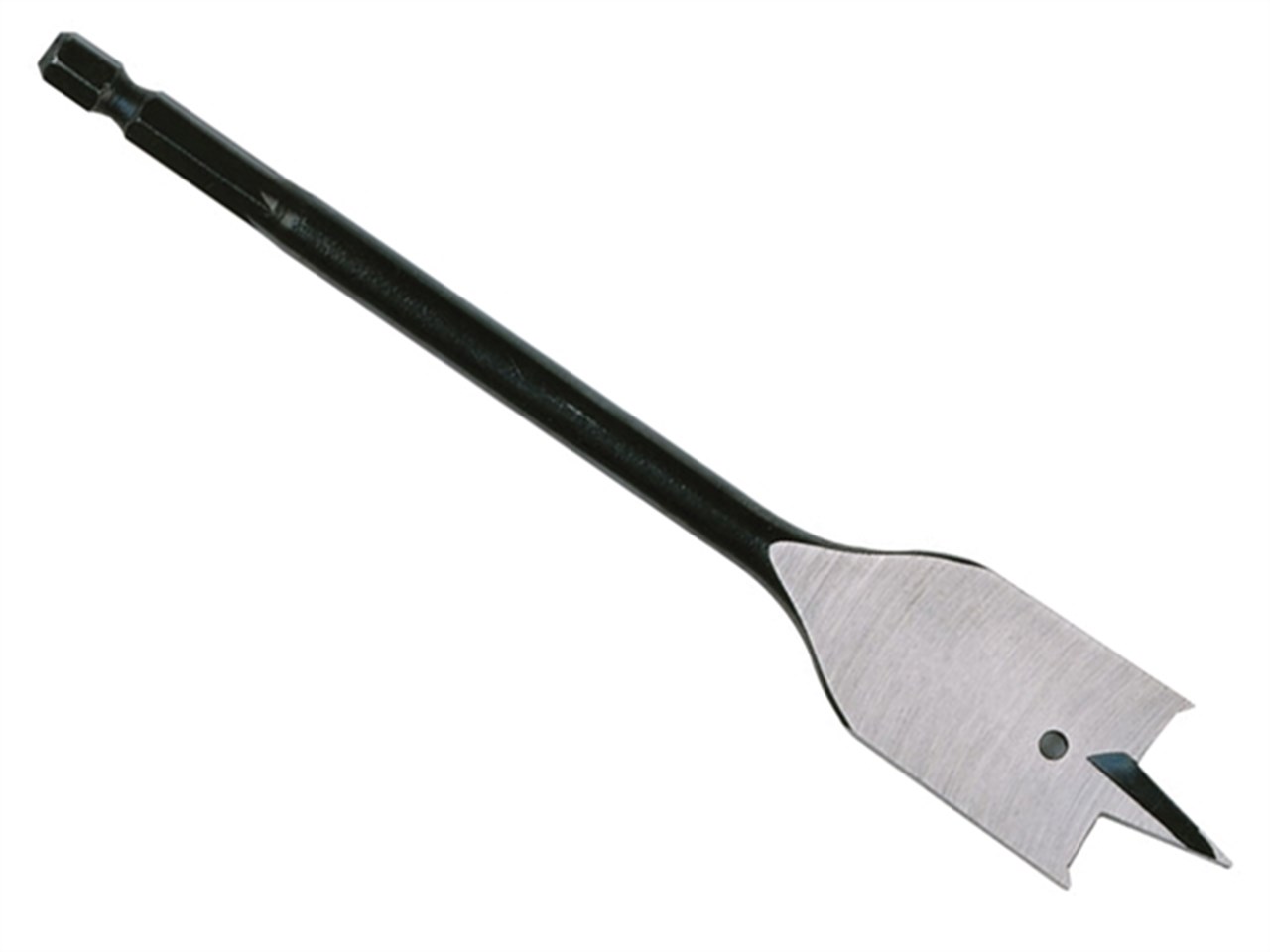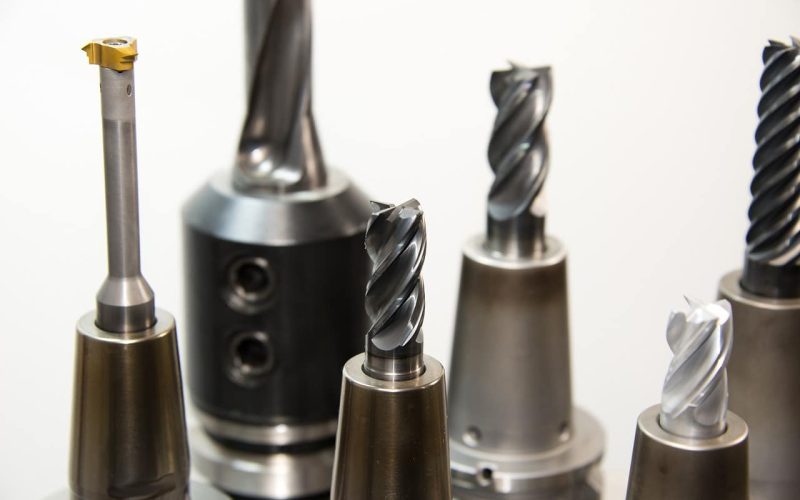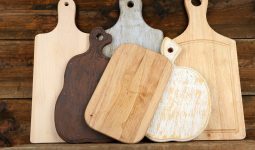It’s no secret that drill bits are essential to every handyman’s arsenal of tools, but how many types of drill bits are there? What kinds of uses do they have? Read on to find out!
Drills are one of the most versatile tools on the market. They’re great for drilling holes, but that’s just the beginning of their usefulness in your toolbox.
The best part about drills is that each drill bit has different purposes and abilities, so you can use them to get anything done.
Keep reading to learn more about these different types of drill bits handy tools and how they work!
Different Types of Drill Bits and Their Uses
1. Multi-fluted Drill
The first drill bit I want to go over is the multi-fluted drill. It is like your regular household drill but with multiple holes at different angles that allow for cutting at angles.
Multi-fluted drills are great for drilling softer materials, such as wood. They can penetrate it more easily than a single-fluted drill bit.
Multi-fluted ones also cut much better because they can cut from multiple angles, not just one hole.
2. Screwdriver Drill Bit
Screwdriver drill bits are drill bits used to create small holes in materials.
They’re most often used to drive screws into tight spaces or when pilot drilling before using a spade bit.
Also, a sharp-tipped one can be used as a center punch. You’ll find that they’re perfect for working with hard surfaces like plastics, ceramics, metal, and stones.
3. Self-Feed Drill Bit
This is among the drill bits that do not require pressure to start the drilling process.
This may make drilling easier for someone weaker or unfamiliar with this type of drill.
A self-feed drill bit has an inside pin that pushes a chip into the hole, removing excess material.
The extra rotations made while pushing the material into the hole help clear out excess material to avoid clogging and possible breakage.
4. Spur Point Drill Bit
Spur point drill bits are ideal for softer materials, such as wood. They can be used for various materials, including plastics, composites, and vinyl.
These bits last longer than the other drill bits because they don’t wear out from heat buildup during use.
They also feature high-speed cutting tips, which produce cleaner holes with fewer burns and chips in the surrounding material.
5. Smooth Point Drill Bit
Compared to spur point drill bits, smooth point drill bits cut better into materials like metal, where steel has started to rust.
These types of drill bits can be found in most sets with more than one type of bit included.
They often feature a cobalt steel body coated with titanium nitride (TiN), reducing cutting friction.
6. Flat Drill

A flat drill is used for drilling in a perpendicular pattern, that is, drilling straight into the wall to make a hole for hanging a picture or attaching molding pieces to the wall.
To use this type of drill, hold the flat drill on the right side up with the little circle on top pointing up and away from you (not toward you).
The left side is your guide hand, which you should use to guide the bit while drilling into the wall.
Make sure that there are no items above where you will be drilling. I learned this one time when I drilled through my desk!
7. Straight Fluted Drill
The straight-fluted drill is the most common type of drill bit because it is used for drilling through all types of materials.
The flutes are usually coated with tungsten carbide, which can increase their lifespan.
However, due to the centrifugal force generated by the rotation of the drill bit when drilling, this type of drill tends to walk around the workpiece.
It will require more frequent adjustments from the user than other types.
Some manufacturers put a stabilizer on one side to combat this problem.
Other problems with these types of drills include difficulties starting holes.
This can be due to insufficient space between the cutting edges.
Lastly, these drills also tend to break under heavy pressure. They cannot withstand harsh circumstances such as a broken tap or hard piece of rock.
8. Double Fluted Drill
Double-fluted drill bits can be used in almost any type of material, but they are more expensive than regular drill bits.
It provides a better edge, less chipping when drilling metal, and can last significantly longer.
The two flutes improve the quality of the drilled hole by ensuring that chips removed from the drilled surface land on the same side as where they were removed, preventing them from being flung about or thrown away.
Also, the two flutes allow for faster drilling. This is because it is less likely to become clogged with debris since chips are automatically directed downward.
9. Twist Drill
A twist drill is used for drilling with rotation. It rotates around its axis, becoming the new drill’s center point.
Because it has a single spiral flute, it can drill through all types of metal softer than the tool’s cutting edge. The bits come in various sizes from 3/64 inches to 1 inch.
10. Countersinking Drill
A countersinking drill is a drill bit that creates an angled hole in the surface where the screw is to be inserted.
This allows the screw head to sit flush with the surface. A countersink allows for less hardware to be used.
There is no need for large bolts or screws that would not have a large contact area with the object being secured.
It also reduces damage caused by fasteners (such as nuts) that thread into tapped holes by eliminating any unthreaded length protruding above the surface.
Typically, these drills are small enough to work on tiny objects like watch mechanisms or eyeglasses.
Countersink drills can come in different diameters, so it is important to know what size hole you need before purchasing one.
11. Centre Drill
This type of drill bit is useful for centering holes in workpieces before other operations. It can also cut keyways, slotting, chamfers, countersinks, and slots.
Center drills are more accurate than most other hole-making tools. They may require more power than those used to cut the surface of a workpiece.
Like many bits, they cannot be reversed or twisted, so they should only be used on materials with low wear resistance, such as aluminum or brass.
The two types of center drills are self-centering (self-feeding) and non-self-centering (also called non-self-feeding).
Non-self-feeding bits must change their direction at intervals while drilling to avoid the risk of drilling too deep into the material.
On the other hand, self-centering bits will automatically retract if they start drilling too deep.
This means their use does not need to be constantly monitored by hand as with a non-self-feeding bit.
Also, when spinning at high speeds, they can produce spirals while drilling.
This helps prevent threading problems and reduces friction by preventing dirt from collecting in thread joints.
12. Plug Cutters
One type of drill bit popular among professional builders is the plug cutter.
Unlike other drills, this drill doesn’t spin around a blade to cut through a material.
Instead, it spins around a tube with notches to slowly make grooves in the material’s surface.
This type of drill bit is mainly used to cut circular holes in countertops, such as sinks or stovetops.
By making tiny cuts with small notches on the cutting cylinder, you can create a perfect round hole without sharp edges that could tear up your countertop.
13. Hole Saw
One type of drill bit is the hole saw. This drill bit has a set pattern and can make round holes of any shape.
Using this type, you can make a neat cut-out anywhere in your material by drilling through the center or just off the edge.
If you are working with an angled surface or wish to work with a large surface area, this is the drill bit for you!
14. Forstner Bit
The Forstner bit is specifically designed for woodworking. Unlike other drill bits, it has a round shank that allows it to drill deep and accurate holes in wood.
There are two types: the standard design features either two or three flutes.
They are angled to cut away the shanks to minimize tear-out on the hole’s edge while retaining good cutting action.
Some bits feature a chisel edge, which allows them to drill deep holes with minimal tear-out.
15. Glass Bit
When choosing the type of drill bit, it is important to consider the properties of the material you’re working with and your project’s goals.
Glass bits are usually used to bore through glass and stone materials, but they can also be used in softer materials such as ceramics.
The carbide tip has to be very hard to not wear down during drilling.
These drill bits are usually equipped with a lubricant, so they cut better than their counterparts without the added help.
They should never be used in metal because friction alone will quickly wear out the point.
16. Hammer Bit
The hammer bit is designed for heavy-duty drilling applications. This type of drill bit is the most effective for solid rock, concrete, or high-grade steel.
It will take approximately four times as long to drill through this material with a hammer drill as with an ordinary one.
Hammer bits should be used only with high-speed rotary hammers (40:1 gear ratio), such as turbocharged or jumbo hammers.
17. Tile Bit
Tile bits are drill bits that come in various shapes for various purposes.
Some holes allow water to pass through, which means they are designed for use on ceramic tiles.
Others have multiple diameters so that they can be used for different purposes, like countersinking screws or drilling starter holes for wood plugs.
They also have either a flat tip or a point at the end, so they can be used for different tasks.
One popular brand is QuicKutz, which offers sets that include tile bits, Masonry and drywall bits, Crown Molding Cutters, and more!
18. Auger Drill
The auger drill is used with wood, metal, plastic, or masonry materials. Its fixed blade point bores holes in the material as the drill handle is turned.
When drilling through studs or walls, it’s best to use this type of drill. This is because they can be turned to maneuver around corners and obstacles.
However, there are some limitations when using an auger hole. If you need to go any deeper than five inches, the shaft may need to be repositioned and pressed against the side wall.
19. Rivet Drill
A rivet drill is a versatile power tool that can handle many drilling tasks.
This includes removing old carpets, roof shingles, and wallboards and cutting drywall on your basement walls or kitchen cabinets.
Rivet drills are also used to make pilot holes for sheet rock screws or deck screws.
Because the only function of this drill is drilling into materials like metal or wood, they are ideal tools for fastening screws to heavy objects like beams or joists.
A good-quality rivet drill should come with a variety of bits, such as ° hole saw bits, hole saw cutters, hole countersinks, spade bits, multi-purpose drills, high-speed steel spiral point drills, and solid carbide-tipped drill bits.
20. Masonry Drill
A masonry drill is designed to bore through surfaces like brick, cinder block, mortar, concrete, and ceramic tile.
It is often used for installing electrical wiring or pipes in tight spaces.
One thing to remember when using a masonry drill is the density of the material you’re drilling into. Softer materials require a gentler touch than denser materials do.
21. Installer Bit
Installation is the basic drill bit that can work with metal, wood, and some plastics.
This type of drill is used for installing things such as door hinges or cabinet hinges.
Also, they can be used for plastic screws that are a fraction too long for their pre-drilled holes.
The head will fit into small recesses on the screw, allowing you to screw it in manually.
Installing bits are tapered so that they can drive screws in firmly and not strip them out as you tighten them up to their full strength.
22. Step Drill
A step drill is designed for drilling through uneven surfaces, such as plywood.
The specially-angled cutting head can be set to different depths, from 3/8 to 3 inches.
There are also some step drills with a straight shank and angled head for fast drilling in two directions.
Also, the drill bits are designed with high precision so that they will automatically start drilling where the previous hole was completed.
Step drills come in various sizes, making them perfect for any job!
23. Shell Drill
The shell drill has been around long, with evidence dating back to 500 BC.
It is used as a type of chisel, most commonly for stone-working, but also in other materials like metals.
The bit is inserted into the holder and hammered with a mallet until it reaches the desired depth.
This method was used by professional craftsmen who didn’t want their blades to dull quickly.
Shell drills are still used today, mainly by hobbyists who enjoy working with wood or metal while replicating old techniques like wood-turning.
24. Spirec Drill
A spirec drill is used for drilling on an angle; a drill press can rotate it to get a wider range of rotation.
The bit spins upright, so the drilled hole is angled and vertical to the ground.
Spirec drills can be used for many projects, such as boat building and furniture construction.
However, it’s important that you have enough space available. These drills come with long rods, so maneuvering in tight spaces may be difficult.
25. Oil Hole or Tube Drill
If drilling through thick material, the drill bits may get stuck. The oil hole or tube drill has an extra round bit on the end that shoots up to break free any wood when you hit a snag.
You can also use this type of drill to cut out shapes to create a design.
It is also good for drilling deep holes. If drilling a round hole, you can use a step drill bit to make different-sized holes as they go through. For specific sizes, go to a woodworking supply store.
26. Counter Boring Drill
A counter-boring drill is among the specific drill bits used to create square holes.
This type of drill bit can also be called a forming or bottoming drill.
It is designed to cut at the same angle as the material you are drilling through, thus creating square corners on either side.
A counter drill is good for drilling into soft materials such as wood, fiberglass, plasterboard, plastics, and rubber.
These materials tend to crumble when drilled with other types of drill bits.
The counterbore drill typically has a thicker shank than most standard drill bits, giving it added strength and durability when cutting softer materials.
27. Brad Point Drill Bit
A Brad Point drill bit is an excellent choice for drilling through difficult materials like plastic.
It has a straight shank and cutting edges on both the inside and outside surfaces.
In contrast to most other drill bits, the chisel point penetrates relatively easily, while the cutting edges are cut cleanly and resist wear.
One downside to using this type of drill bit is that it tends to break off in the hole if it sticks in the material.
This can happen because you pull on the end, leaving less than two-thirds engaged with your workpiece.
28. Bullet Pilot Point Drill Bit
If you are looking for versatile drill bits that can be used in many different situations, you might want to consider a Bullet Point Drill Bit.
These bits are designed to drill through various surfaces, such as wood, plastic, soft metals, hard metals, rubber, and steel.
This particular type of drill bit is available in sizes ranging from 1/8 to 3/4.
One major advantage of this type of drill bit over other types is that they require very little physical pressure when in use.
Since they usually only need one hand to operate, you can use your other hand to steady the workpiece or guide it accurately into the hole that needs to be drilled.
29. Diamond Drill Bit
These drill bits can drill through any hard material but cost much more than standard drill bits.
Diamond drill bits are ideal for glass, stone, granite, marble, and tile surfaces.
They are also perfect for ceramics or pottery that require high precision. The tungsten carbide teeth offer durability with a high cutting speed.
30. Pilot Hole Drilling
These drill bits should only be used with softwoods like pine, cedar, or fir boards.
Pilot hole drills are inserted through one board and pushed through another board until they meet at an intersection at its center.
Once fed through the first board, they should be set perpendicular to the second board before drilling begins.
If possible, install a jig on the back of your project so that you can ensure that your pilot hole ends up where you want it;
Uses of Drill Bits
When working with metal, you’ll need different types of drill bits to get the best results.
Each drill bit is designed for a specific task, from cutting to starting screws.
Here are the uses of drill bit:
- Wire brushing: This drill bit can remove rust, paint, or dirt buildup on most surfaces, including wood, plastic, and metals.
- Countersinking – this type of drill bit features a flat-bottomed tip that allows it to sink below the surface it’s being drilled into. Countersink bits are often used when installing wooden plugs in finished furniture so that there is no visible screw head protruding.
- Driving screws – this drill bit can be used for drywall or decking applications.
- Drilling holes in tile: These drill bits are intended for use on porcelain tile only. Their pointy top pierces through the tile while digging out material on the backside.
- Wood-hole saws are specialized for cutting through hardwood floors, steel panels, and fiberglass insulation. These drill bits feature two serrated blades that make circular cuts along their circumference as they spin.
- Chiseling—This drill bit is usually reserved for softer materials like plastics, rubber, and composites because it does not have much power behind it. It creates a conical shape as it spins to cut away material like foam blocks. Counterboring—These drill bits are utilized when making holes in round objects like conduit pipes. Counterbore bits create wider openings than typically achieved with a standard drill bit.
- Electric installation: Electrician-style drill bits come in various sizes depending on the work area size. They’re primarily used for jobs involving residential wiring, cable installation, and phone line installation. Electrician-style drill bits are designed to bore large holes in tough materials such as concrete and stone masonry.
How to Choose the Right One?
When selecting the right type of drill bit for a project,
- First, determine the material you will drill through – softwood, hardwood, metal, etc. Generally speaking, two types of drill bits can tackle most applications: HSS steel bit or Tungsten Carbide tipped bit.
- Selecting a specific type often depends on the material—for example, Tungsten carbide-tipped bits are best used with steel and masonry, while HSS Steel bits can take on either challenge.
- The hardness rating will also be important when choosing the right drill bit. However, it is always good to have both hardness ratings available for flexibility in your projects—especially if they’re off-site. For high tensile strength and resistance to wear, high-speed steel (HSS) bits are ideal, as is M2 High-Speed Steel, which has been heating treated to provide additional toughness.
- They are made from tough materials like tungsten carbide-coated steel, and their cutting edges contain a higher concentration of tungsten carbide than other bits. A much less expensive option is carbon steel, which doesn’t retain its sharpness for as long but costs less, so keep this in mind when making decisions about your budget for drill bits. All of these come in many different lengths, diameters, styles, and thicknesses, so it’s important to choose one that matches the needs of your project.
Conclusion
Drill bits are small cutting tools used to make holes in various materials, such as wood, metal, and plastic.
The tip of the drill bit comes in multiple sizes and shapes, allowing for the creation of many different types of holes in other materials.
Drill bits range from 1/16-inch, 1⁄2-inch, and up to 3⁄4-inch diameters, with most common sizes ranging from 1⁄8 inch to 1⁄2 inch.
You will also find several drill bits, including spur, spade, twist, and others, which are used for specific applications depending on the material you are drilling into or shaping with your bit.








